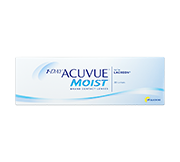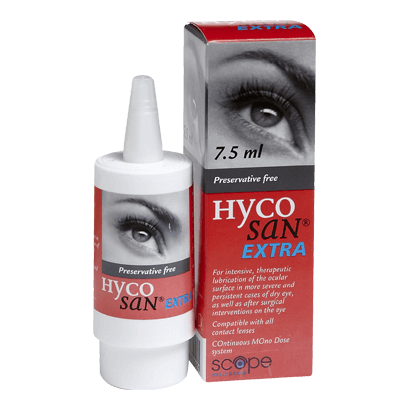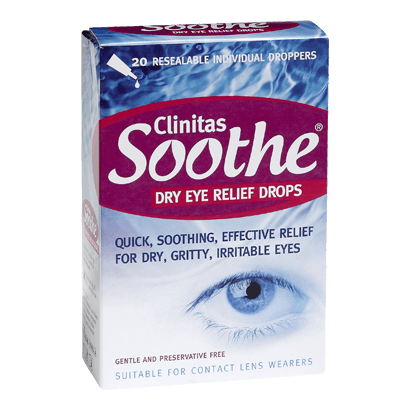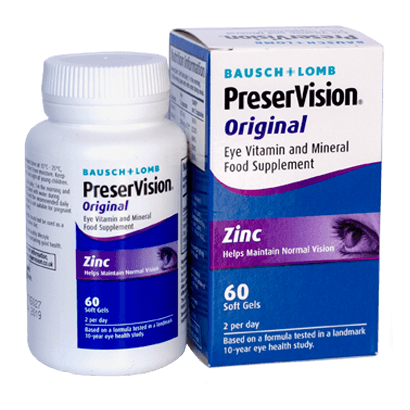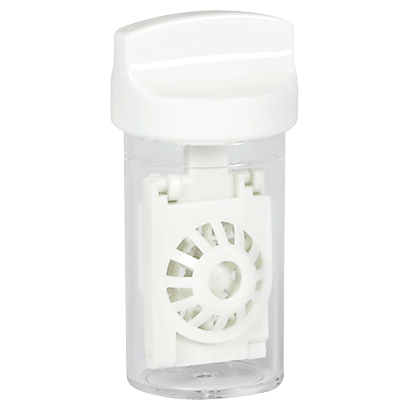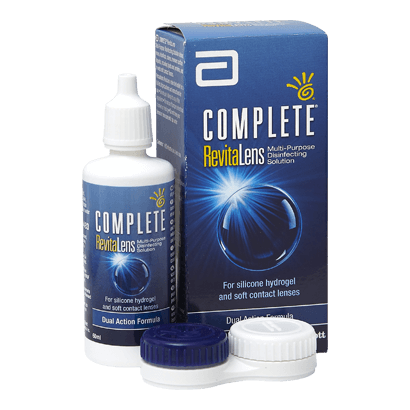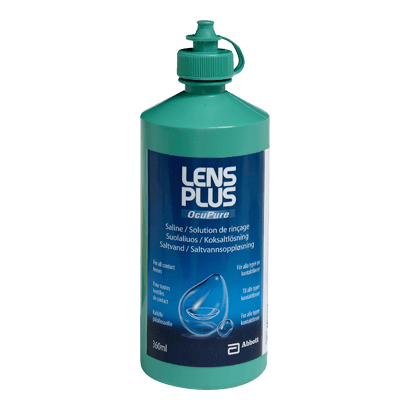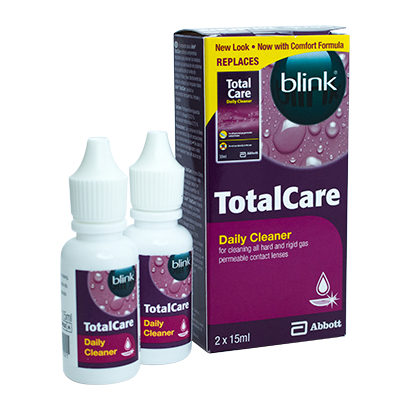Contact lenses can be used to correct vision problems such as short sightedness, long sightedness and astigmatism, even if you suffer from a complaint like dry eyes or eye strain. It’s just a matter of looking after your lenses to keep your eyes healthy and comfortable. Read our handy guide, call us for free advice on contact lenses, or ask our optician about eye care. We’re available Monday - Friday 8:00 - 21:00, and Saturday - Sunday 8:00 - 18:00, on 020 7768 5000 in the UK or on 1 800 870 0741 in the US, or by emailing help@visiondirect.co.uk.
Common vision problems that can be corrected by contact lenses
Contact lenses can be used to correct many common vision problems, including short sightedness, long sightedness and astigmatism. Here’s some handy information on each condition, and which contact lenses and treatments might be suitable if you suffer from them.

Short sightedness – also known as Myopia
Short sightedness, or Myopia, usually develops during childhood and is more common with women than men. The condition makes focusing on things that are placed at a distance from you difficult; like reading road signs or words on a blackboard. Looking at things that are close by should be no problem, for instance when you’re reading a book or using a computer screen.
Myopia is caused by having an overly elongated eyeball, which interferes with your cornea’s ability to focus and causes light rays to focus in front of the retina, rather than its surface. Myopia can also occur due to the curved shape of the cornea and/or the lens, rendering the extended eyeball a poor fit, or as a result of both of these issues.
Did you know: If your parents suffer from short sightedness, the chances of you experiencing it are increased. This condition can stabilise as children grow into adults, but can also worsen with age.
Contact lenses for short sightedness, and Myopia treatments
Lots of people wear contact lenses to correct short sightedness, the most popular brands including Acuvue Trueye and Focus Dailies. Corrective glasses and refractive surgery are treatments used to correct myopia. If myopia is severe, you might have to wear your corrective glasses or contact lenses constantly, but if it's moderate, you'll only need to wear them for distance viewing.
Refractive surgery is another option to consider and you may find you no longer need glasses or contact lenses after its completion. An excimer laser is often used to perform refractive surgery, which consists of two forms, being photorefractive keratectomy (PRK) or LASIK. With PRK a layer of corneal tissue is removed to flatten the cornea, allowing light rays to accurately focus on the retina. With the LASIK procedure a tiny flap is created from the plane of the cornea. The laser then removes part of the corneal tissue and the flap is returned back to its original position. LASIK surgery is the more common of the two, although it's not suitable for children or teenagers.
Onthokeratology is a non-surgical option, requiring you to wear specially designed hard gas permeable lenses at night, to reshape the cornea. When the lenses are removed in the morning, the cornea retains its new shape temporarily, allowing you to see more clearly during the day without glasses or contact lenses. Phakic Intraocular Lenses (Phakik IOLs) are somewhat like contact lenses, although they are permanent and placed inside of the eye. Also no maintenance is needed with this procedure.
Long sightedness – also known as Hyperopia
Hyperopia is the medical term used for long sightedness. People experiencing hyperopia can see objects from a distance, but have difficulty focusing on objects that are in close proximity to them. This condition manifests as a result of light rays entering the eye's focus behind the retina, as opposed to hitting the retina directly. If you have hyperopia your eyeball will be shorter than normal. Children born with hyperopia often grow out of it, as their eyeballs extend to a normal size.
Headaches or eye strain are common symptoms of hyperopia and you might find yourself squinting or your eyes may feel fatigued when performing short sighted tasks. Book an appointment with your optician for an eye exam if you are experiencing any of these symptoms, to ensure you have the correct prescription.
Contact lenses for long sightedness and hyperopia treatments
It’s very common to wear contact lenses to correct long sightedness. Some of the most popular brands include Air Optix and everclear contact lenses. Glasses can also help correct hyperopia by changing the way light rays bend into the eyes. With long sightedness you may have to wear your glasses or contact lenses constantly, or it may only be when reading, working on your computer, or carrying out any other short sighted tasks.
Refractive surgery, like LASIK or Conductive Keratoplasty (CK), which is a non-laser refractive surgery, can also help to correct hyperopia, either eliminating or reducing the use of contact lenses and glasses.

Astigmatism
People with astigmatism commonly use toric contact lenses to correct their vision.
If you have astigmatism, it means that due to your cornea being irregularly shaped, there’s a problem with the way your eye focuses light. With this condition, light is directed to multiple focal points in the front of your retina, behind it, or on both of these sites, rather than to a single focal point on the retina for clear vision.
This means you’ll probably experience blurred vision, and objects that are in the distance might appear distorted. You could also suffer from eye strain and headaches, especially when reading or viewing a computer screen for a prolonged period of time.
Did you know: A normally-shaped cornea usually resembles the shape of a football, but if you have astigmatism, your cornea looks more like a rugby ball in shape.
There are three types of astigmatism; myopic, hyperopic and mixed astigmatism. Myopic astigmatism occurs when both or one principal meridian of the eye is short sighted. Hyperopic astigmatism occurs when both of the principal meridians are long sighted and mixed astigmatism is descriptive of one meridian being short sighted and the other long sighted. As well as these classifications, astigmatism is identified as being irregular and regular.
Irregular astigmatism occurs when the principal meridians are not perpendicular to each other, while with regular astigmatism, the principal meridians are perpendicular to each other but 90 degrees apart. Regular corneal astigmatism is identified by the rugby shaped eyeball and is the most common of two.
Toric contact lenses and treatments for astigmatism
Toric lenses for astigmatism are readily available from online contact lens suppliers, including VisionDirect.co.uk. The most popular brands include Focus Dailies Toric and 1 Day Acuvue Moist for Astigmatism.
Gas permeable contact lenses are effective in treating astigmatism and their hard structure makes them an ideal replacement for the cornea's surface. Soft lens prescriptions for astigmatism also consist of a sphere and cylinder power and axis designation. Glasses used to treat astigmatism contain lenses that are specifically crafted to compensate for the cornea's uneven shape. As light passes through the corrective lens, it is directed onto the retina to improve vision.
Presbyopia – a form of long sightedness associated with old age
It’s common to wear multifocal contact lenses to treat presbyopia. Presbyopia is a form of long sightedness that generally manifests with age. As you get older, the natural lens inside of your eye thickens, loosing flexibility. The lens hardens, becoming rigid with reduced elasticity and the muscle fibres that surround the lens becomes less supple. All of these factors make it a challenge for the eye to focus on objects that are placed in close proximity.
This condition can affect anyone, even if you've always had perfect eyesight and vision. Presbyopia typically begins to appear around the age of 40 and you may notice your eyesight becoming blurry when carrying out tasks like reading or sewing. If you are short sighted and wear glasses or contact lenses, presbyopia can still affect you, causing fuzzy vision with objects that are close up.
Symptoms of Presbyopia
If you have presbyopia, you will have developed a tendency to hold objects, like books and newspapers, at arm's length away in order to read the fine print clearly. Text on pages of books, newspapers and magazines will appear blurry if you try to read them at a normal distance. You might even experience eye-strain and headaches if you attempt to carry out tasks like needle work, jewellery making or handwriting, feeling quite fatigued.
Contact lenses and treatments for Presbyopia
Multifocal contact lenses are often used to treat presbyopia, coming in soft and gas permeable options. Monovision contact lenses like Proclear Multifocal, where one lens is used for distance viewing and the other for short sighted vision, are used to treat presbyopia. With monovision lenses, the brain automatically switches to the appropriate eye for each task, although while wearing them you may experience a loss of depth of perception, as well as reduced visual sharpness.
Reading glasses may also be prescribed for presbyopia. These glasses are worn whenever short sighted tasks are being carried out. You can also wear reading glasses with contact lenses, although your optician will have to prescribe those for you.
A stronger prescription will inevitably be required over time, so it is important to get regular check-ups with your optician, to ensure your prescription is still functioning at its optimal level for your eyesight.
A PRELEX operation is the surgical option for presbyopia. This procedure removes the old and inflexible lens, replacing it with an artificial one and is performed under local anaesthetic.
Blurred vision and contact lenses
Contact lenses can be used to treat eye conditions, which cause blurred vision. However, if you don’t follow the instructions advised by your optician, and the lenses get dirty, damaged or wet, you may experience blurred vision.
Other common vision problems
-
Blurred vision – if your vision is out of focus, or your eyesight lacks sharpness, you may have blurred vision. This can be caused by short sightedness, long sightedness and astigmatism, but it can also be symptomatic of dry eyes, eye changes during pregnancy or neurological disorders. Cataracts can also cause blurred vision, causing problems seeing in very dim or bright light, and a halo effect around bright lights, or double vision. If your blurred vision has suddenly appeared, please arrange a check-up with your optician.
-
Double vision – also known as diplopia, or ghost images, can occur for several reasons, like intoxication or inadequate sleep. It can also be the result of a severe health problem, such as a stroke, head injury, brain tumour or brain aneurysms. Sometimes cataracts can cause double vision, more often in one eye, as can cranial nerve palsies which involve the paralysis or loss of coordination of one or more muscles involved in the movement of the eyes. Special contact lenses, eye drops and punctal plugs or surgery can help with double vision. If you experience sudden double vision, please arrange a check-up with your optician.
-
Higher-Order aberrations – also known as HOAs or coma, trefoil and spherical aberrations, this condition makes it hard to see at night due to experiencing halos, glare, blurring, double vision and starburst patterns. Everyone has some sort of higher-order aberration varying by degrees, so there is little cause for concern unless it disrupts your vision.
-
Peripheral vision and tunnel vision problems – tunnel vision makes you feel as if you are seeing through a narrow tunnel due to an abnormality in your wide angle field of vision. It can also make seeing in dim settings and navigating while walking more difficult. Peripheral vision problems like this can be caused by optic nerve damage from conditions such as glaucoma, eye strokes, or eye injuries. It can also be caused by compressed nerves and concussion. If you experience sudden tunnel vision, please see your optician as this could indicate a detached retina.
Need a little help? Call us for free advice on contact lenses, or ask our optician about eye care. We’re available from Monday - Friday 8:00 - 21:00, and Saturday - Sunday 8:00 - 18:00, on 020 7768 5000, or by emailing help@visiondirect.co.uk.

